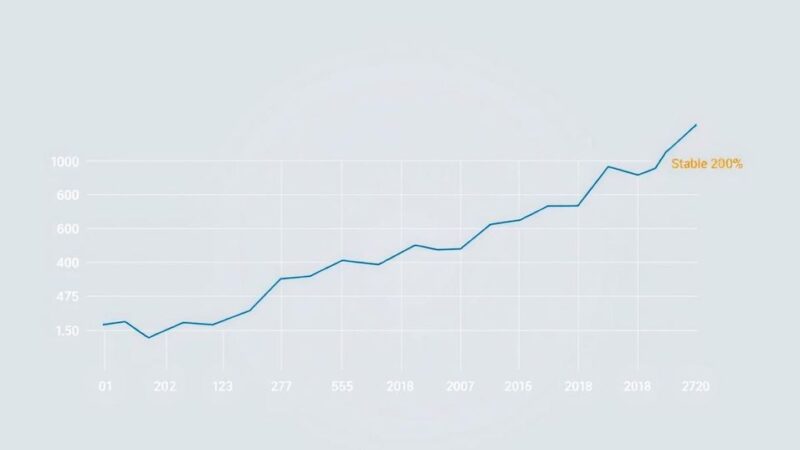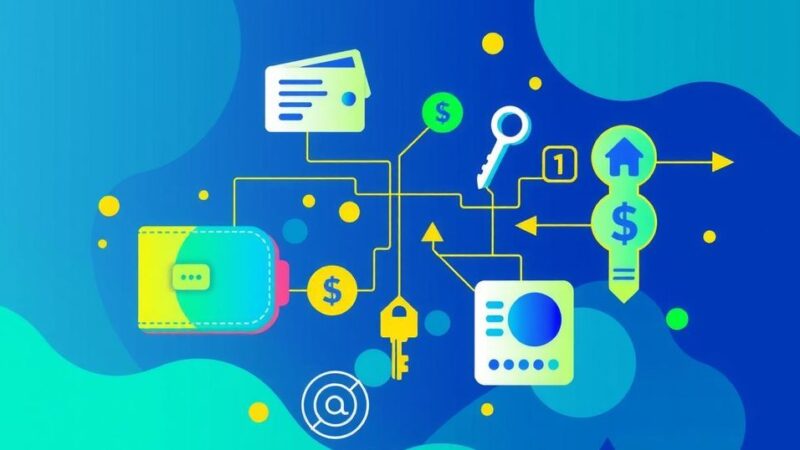Hive Digital Technologies has achieved a crucial milestone of 10 Exahash in Bitcoin mining capacity, largely due to acquiring Bitfarms facilities in Paraguay. The company aims to reach 18 Exahash by late summer. Additionally, its HPC subsidiary has hit a $20 million annual run rate, with projections of $50 million by year-end. The growth reflects an integrated strategy between Bitcoin mining and high-performance computing as demand for AI rises.
Hive Digital Technologies (TSX-V:HIVE, NASDAQ:HIVE) is making headlines as it has reached a significant milestone—10 Exahash (EH/s) in Bitcoin mining capacity. Frank Holmes, the executive chairman, shared insights on how this growth was achieved, especially through the acquisition of Bitfarms facilities in Paraguay. This move not only exceeded expectations but also positioned the company to target an ambitious 18 EH/s by late summer.
Holmes spoke about this rapid progress with Proactive, emphasizing that securing those partially completed Bitfarms sites allowed the company to fast-track their operations in Paraguay significantly. Originally, they had planned to reach up to 15 EH/s by August or September, but the faster pace suggests that 18 East EH/s is now within reach sooner than anticipated. The advantage of lower energy costs in Paraguay also plays a role in making their operations profitable, turning previously unproductive Canadian miners into assets.
Additionally, the company’s high-performance computing (HPC) subsidiary, Hive HPC, is not lagging behind; it recently hit a $20 million run rate. Holmes credited Craig Tavares, who has just come on as president of Hive HPC, for this progress. This has allowed current CEO Aydin Kilic to concentrate on Paraguay’s rapid growth, with optimistic projections of reaching $50 million by the end of the year.
Frank was quite enthusiastic about the potential for both parts of their business—Bitcoin mining and HPC—to support each other. While both require significant electricity and infrastructure, the high-performance computing operations tend to demand a greater investment. The development of Bitcoin facilities is aiding the infrastructure for HPC, demonstrating how intertwined these sectors have become, especially as AI becomes a booming field in tech.
Holmes elaborated on this connection, stating that capturing stranded electricity for Bitcoin mining not only helps that sector but also lays down a foundation for high-performance computing. Companies are beginning to exploit the surplus electricity from Bitcoin mining for their own data centers. This interconnected approach is becoming more necessary as the demand for AI services grows.
However, Holmes did mention the challenges they face regarding telecommunications infrastructure. While they have ample electricity, the advancement of fiber optics hasn’t kept pace with the rapid rise in mining and computing power. Some of their land remains underutilized for this reason. He noted the rising trend of “sovereign data centers,” where areas seek to keep data within their borders for security and performance reasons.
All signs point to 2025 being a pivotal year for Hive Digital Technologies, as it continues to expand its presence in both the Bitcoin mining landscape and the high-performance computing arena. The company stands to benefit greatly as more sectors realize the significance of having efficient, reliable, and local access to power and data storage.
Hive Digital Technologies is significantly expanding its Bitcoin mining operations by reaching 10 EH/s, facilitated by strategic acquisitions in Paraguay. This rapid growth is projected to continue, potentially hitting 18 EH/s by later this year. Coupled with the promising performance of Hive HPC, the company is positioning itself to leverage the growth of both sectors, with a clear eye on the upcoming demand for AI and computing power. Balance between these domains, however, will depend on improvements in telecom infrastructure and the push for data sovereignty.
Original Source: www.proactiveinvestors.com






